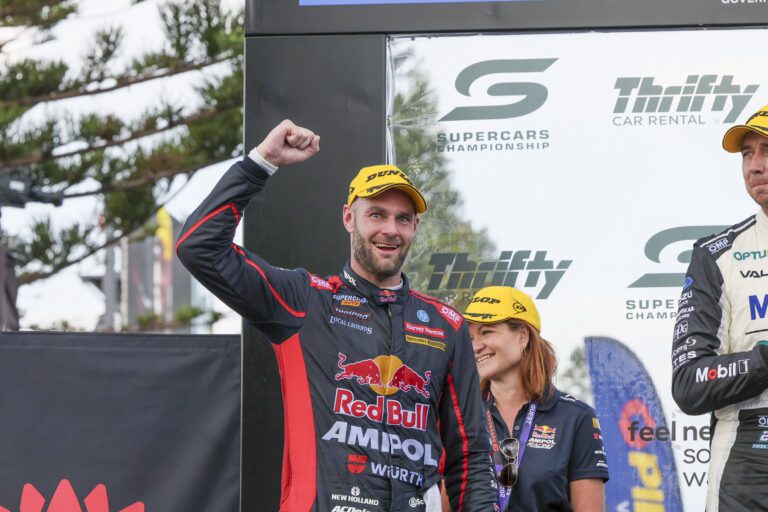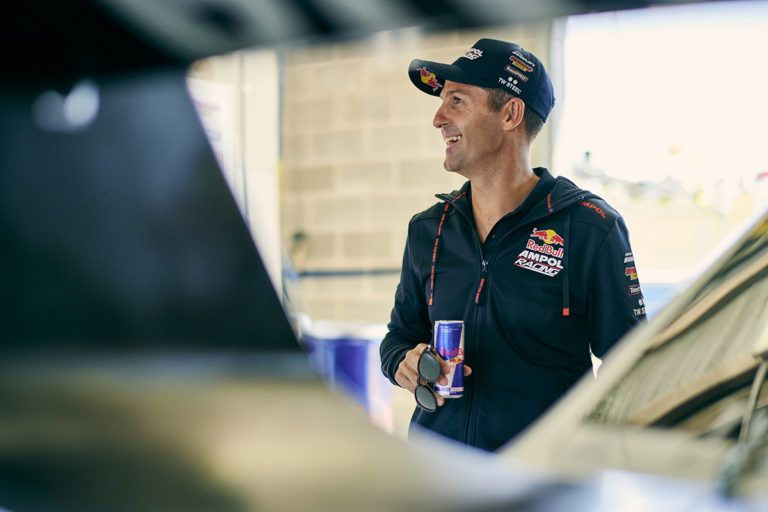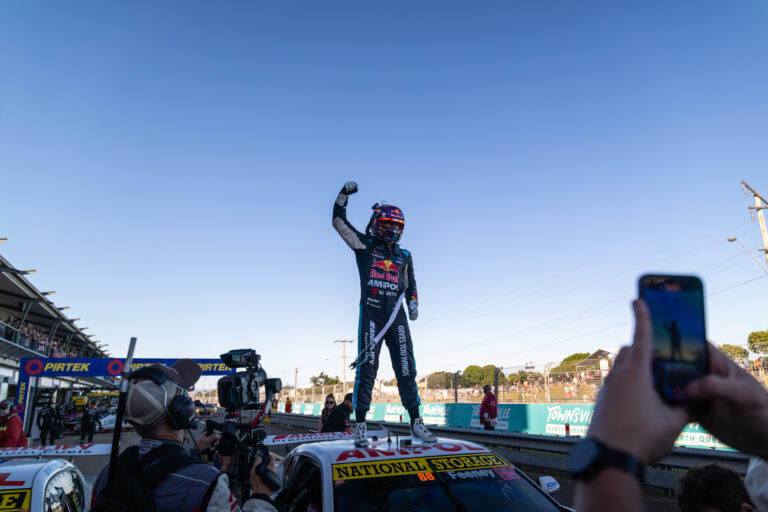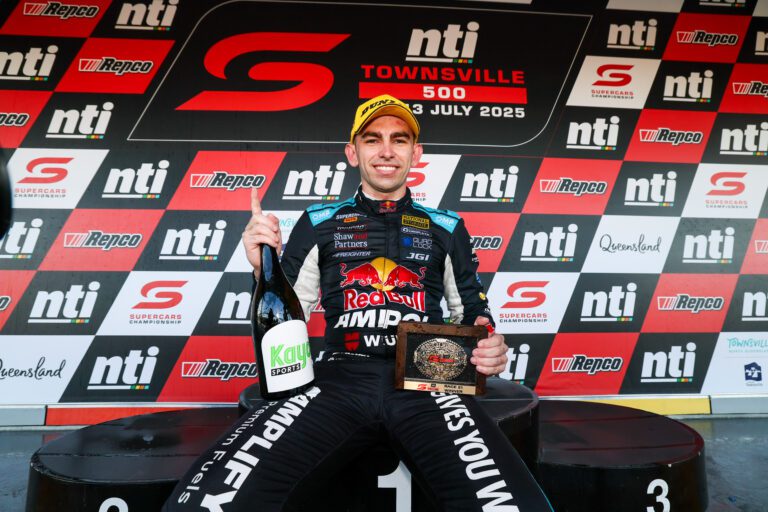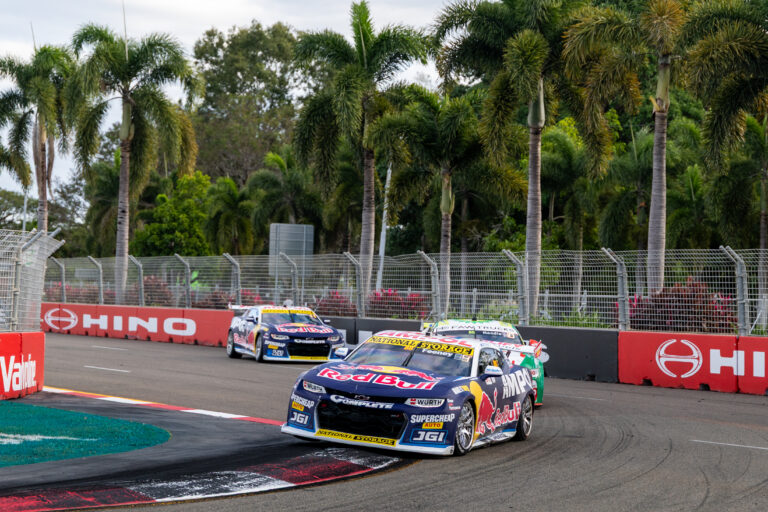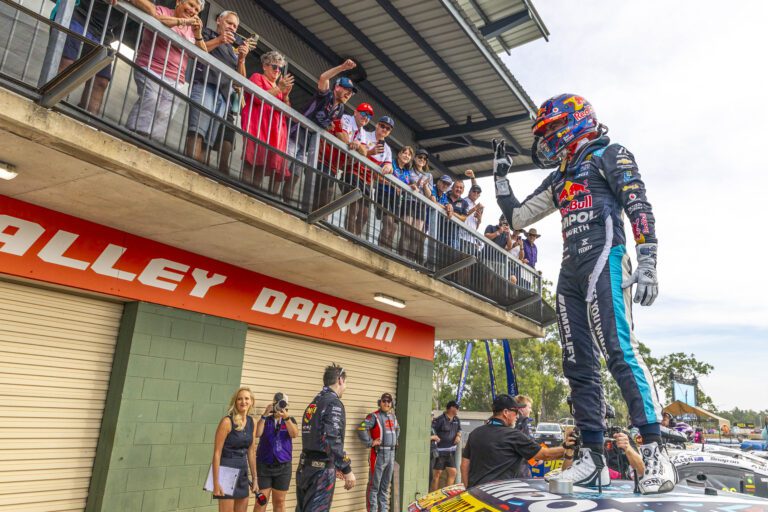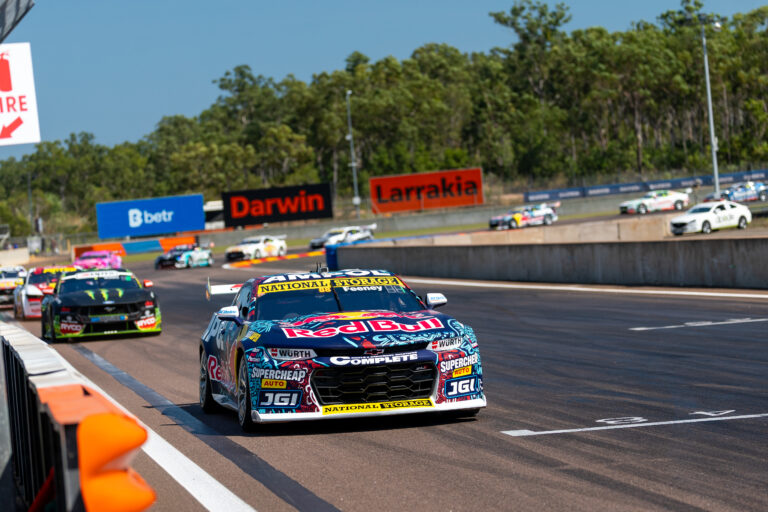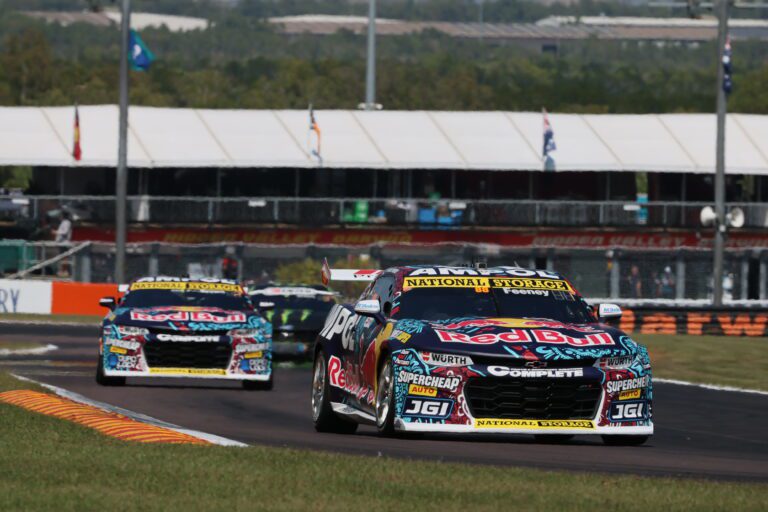It’s the biggest motor race in Australia – and Paul Dumbrell, Matt Campbell and Steven Richards find themselves smack in the middle of it.
By Matthew Clayton
This story originally appeared on redbull.com
It’s one of the highest-pressure motorsport job descriptions around. Join a team in the middle of a season for the three most important races of a campaign, get to grips with machinery you’ve barely driven (or perhaps haven’t for a fair while), quickly be on the pace of the drivers who regularly race the same cars and might have title hopes on the line, and don’t – whatever you do – stuff up.
Being a co-driver for a full-time Supercars star – as Triple Eight trio Paul Dumbrell (who teams with Jamie Whincup), Matt Campbell (Shane van Gisbergen) and Steven Richards (Craig Lowndes) are this year – comes with extreme pressure, but can lead to extreme rewards. The line between hero or zero? Very, very fine.
For Dumbrell, so long a driver in the main game himself, it’s a chance for the 35-year-old to add more enduro silverware to a partnership with Whincup that has already trodden the top step of the podium at Sandown (twice) and Bathurst. For Porsche young gun Campbell, 21, 2017 is his first chance to complete the Pirtek Enduro Cup with a fully-fledged Supercars powerhouse like the Red Bull Holden Racing Team, and – no less – alongside the reigning series champion. And Richards, 45, gets to rekindle a partnership with Lowndes that saw the pair win Bathurst just two years ago, the most recent of four Mount Panorama victories for a driver who has achieved success in most things he’s driven in a Supercar career that spans two decades.
With Bathurst (October 8) closing in faster than a VF Commodore on Conrod Straight, we chatted to PD, Matty and Richo about stepping into the spotlight and playing a co-starring role in the biggest race on the Australian motorsport calendar.

redbull.com: One for PD and Richo first. When you come back to a familiar partnership each season – and one that’s already been successful – do you pick up from where you left off, or does so much change in the category between seasons that you need to take each one as a fresh start?
PD: It’s six years together for Jamie and I this year – time moves really quickly in this sport – so it’s similar, but never completely the same. There’s been a couple of times in the six years that there’s been fundamental changes that we have to adjust to. In ’12-13 there were the new cars that came in, and this year, the one thing I’ve noticed from watching the season and then competing at Sandown is that the competition has stepped up another level again. All of us co-drivers need to lift our games more than ever to make sure we’re competitive and that we’re helping the main drivers stay where they need to be. So it’s more small differences year on year, so not quite a fresh start.
Richo: Craig and I haven’t been together as long as PD and Jamie have – it’s four years in a row for us this year – but I still believe you need to take each year in isolation, even though we have that continuity. Some elements are familiar from years of being together, sure, but every race at Bathurst is a different set-up, a different story. Having a different approach and a different mindset allows you to roll with the punches a little bit better there. So much can go on up there, and there’ll be some years when everything breaks for you and goes to the script, and then other years where you go nowhere near it. Just being open to being able to step out of your comfort zone and do things a bit differently is pretty important.
Matt, for you, it’s a new partnership with Shane this season, and one where you’re new to the team as well. What contact did you have with Shane in the lead-up, and how did the team help you be as prepared as you could be for Sandown?
Matty: It all came about late last year, and I was obviously stoked to be able to do the enduros alongside Shane as the reigning series champion, and with the reigning teams champion too. I had a couple of tests before Sandown, one in the middle of the year when I came back to Australia, and then the main one two weeks prior to Sandown, so we could work on our driver changes and that sort of thing. Shane’s been really good and so open to helping me, and we’re both fairly easy-going personalities, so I don’t think it’s been hard for either of us to work together. I’d actually only spoken to him a couple of times briefly before I joined the team, so it’s not like we go back a long way or anything. So it’s been fairly easy for both of us, I think. I did the enduros last year with a different team and different co-driver and you’d think those feelings would come back to you, but it all felt new again.
READ: Catch up with Campbell after his second ever hit-out in the RBHRT Commodore
How mindful are all of you that you’re being dropped into a live championship for the main game guys, and that it’s not all about each race per se as they happen?
Matty: It’s 100 per cent a balancing act, for sure. You just have to strip it back and remember why the team hired you in the first place and don’t overcomplicate that – drive the car, do the minimum laps you’re supposed to do, and then hand the car back to Shane in the same position or close to the same position as he had it, and hopefully without a scratch on it! There’s pressure for sure, especially being with the reigning series champion like I am, but you can keep that under control by focusing on the bare basics of the job. There’s no need to overthink it or give yourself any extra stress.
PD: Matt’s right, it’s a tough thing for any of the co-drivers, but maybe more so for the top five to six guys in the championship proper. I’m realistic as to what a co-driver needs to bring. We’re not in there to win the race, we’re there to do a good enough job to help the teams take the next step when the main game guys are back in the car to win. At the end of the day, it’s up to the main drivers to take the lion’s share of the responsibility like Jamie always does, in the last hour or so of Bathurst. So when you’re a co-driver for someone who is fighting for something bigger, like Jamie is this year and most years to be honest, it’s something that’s always on your mind.
Richo: There’s a role for us that’s dictated by Roland (Dane) and the Triple Eight guys, but by the same token there are times where your role as a co-driver is to take opportunities. You need to know where that line sits in terms of risk versus reward during the race, where you can make up a position or make a change to the team’s benefit. It can be a bit tricky when you’re dropped in there, but you can play a reasonably significant role in the outcome. This year, with where Craig sits in the championship, maybe you can focus more on this one race, and there’s a chance to take points off other people in championship contention as well. The picture is still bigger than just Bathurst, but there’s no question that there are three Triple Eight cars all trying unbelievably hard to win that race.
Richo, you don’t have the benefit of doing as many kilometres in a Supercar each year as PD does, so how do you stay on top of that?
Richo: The adjustment probably isn’t as great for me as it might be for others as I’m doing plenty of driving anyway, and in cars that are as fast or faster in the Australian GT Championship. If you were coming to events like Bathurst from another category where everything was slowed down, that might be a bit bigger deal. Coming out of the BMW into a Supercar, I tend to go around corners a bit quicker and brake a bit later, so the adjustment isn’t too bad. It’s funny how all the little things that seem unfamiliar when you first get back in the Supercar come back to you.
Matt, Sandown played out a little differently than you and the team would have planned with SVG doing the opening stint and you out there mostly against the full-timers?
Matty: Definitely unusual, and going into the weekend that wasn’t in the plan, to be starting from as far back as we did on Sunday. Friday and Saturday were tougher for us than we wanted and we struggled with the car a bit, but the car felt mega on Sunday. Our strategy was a lot different to everyone else’s, and me against the main game drivers was a risk we had to take from as far back as we were in qualifying. I was happy with my pace and was able to maintain the position. Coming from as far back as we were, everything was looking towards being a good result, but we had some tyre dramas – just wasn’t to be …
One for all three of you to finish – what is it about that Sunday morning at Bathurst that stays with you, that makes it different to any other race?
PD: It’s different, 100 per cent, and you can’t say it’s like any other race, it just isn’t. I’ve been lucky enough to be up there 15 or 20 times – my first one was in 1999 – but that buzz and the butterflies at the start of the race are like nothing else we do, and you never get complacent with it, or take it for granted. I’ve been lucky enough to start the race a number of times pairing with Jamie which is a lot of responsibility, but I welcome that. It never gets old, and knowing what that feels like, it’ll be great to get that buzz back next week.
Matty: Even as a spectator, Bathurst always felt different – I went there many times before I was on the other side of the fence, and there’s something about getting up early that Sunday morning that’s hard to put into words. Actually, some of the spectators probably haven’t been to bed to get up early on Sunday morning, that’s all part of it … Last year, being in the 1000 for the first time and actually racing and not watching other people race, it was a bit surreal. Such a big crowd, people everywhere, it’s just a phenomenal feeling to be part of it. Being there to actually see that and feel that means more than you can describe in words – you need to be there to get it.
Richo: Every year, it’s one of the very few races for me that the nerves are very high on Sunday morning. You’re hoping for a great outcome, but there’s six-and-a-half hours ahead of you. The anticipation for the start of the race … that’s something you never lose at Bathurst. It means so much to the DNA of the sport in Australia – it’s what this whole championship and the category has been built around for 45-50 years.

